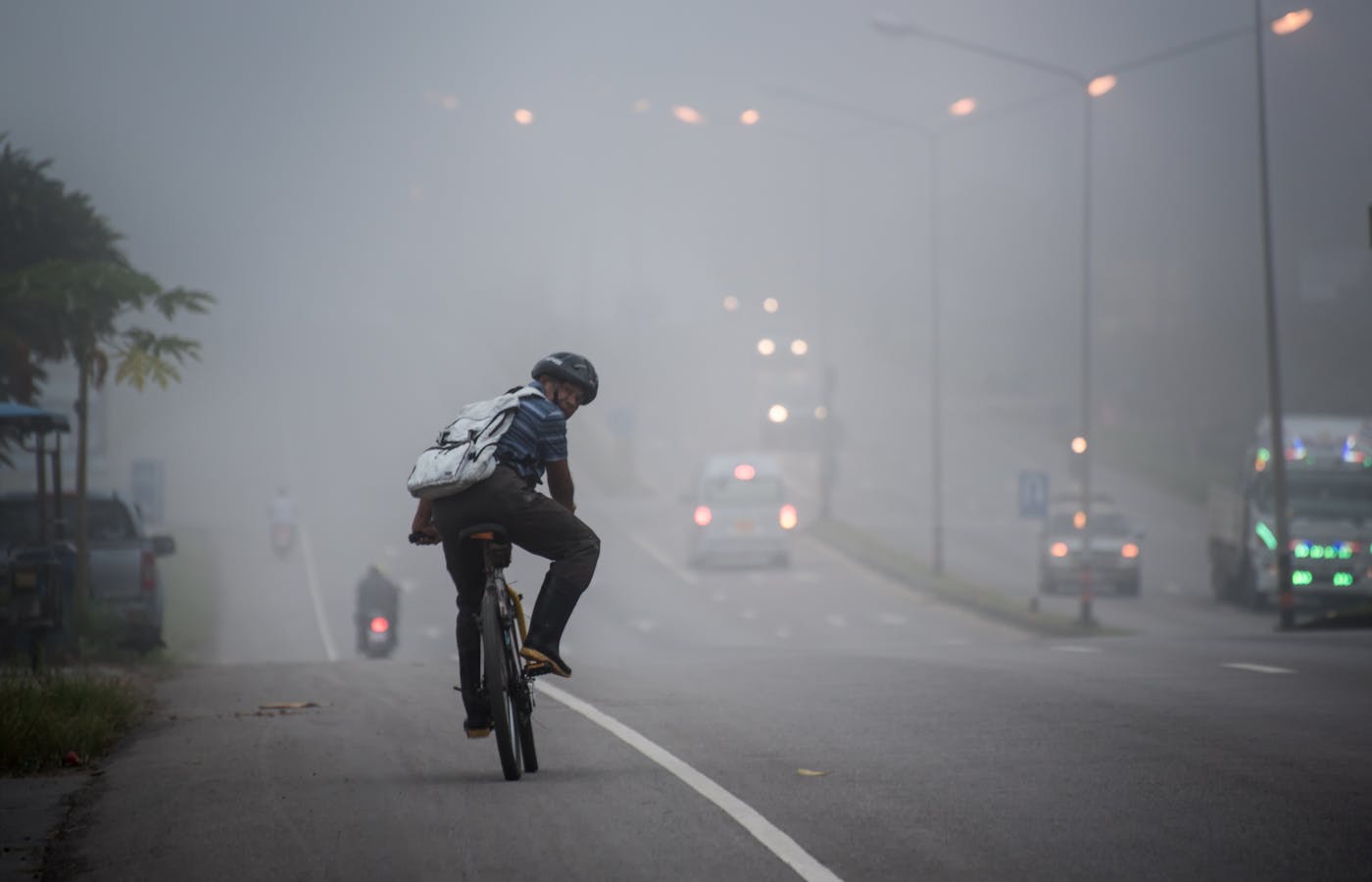Explore Our Network of Sites
Search
By:

When it comes to environmental solutions, all too often the onus is put solely on the individual. It’s time for all bicyclists to become advocates and demand institutional action.
Summer 2021 has come to an end with yet another record fire season and all-time temperature highs. For many in the U.S., sweltering days were defined by high levels of ozone and fine particulates from fires burning along the West Coast, lowering air quality and visibility as far away as Maine. Couple poor air quality with a pandemic that has made public transit more challenging and, for many, traveling by car can seem like the safest bet.
The facts, however, paint a different picture. For example, we know that the health benefits of biking outweigh the impacts of harmful air quality. Similarly, in a first-of-its-kind study published this past August, researchers at Colorado State University (CSU) found that bike-sharing trips in the U.S. provide health benefits for bicyclists that far surpass the risks, such as air pollution. Academic research is mixed on whether people are exposed to greater air pollution while riding a bike or driving a car, depending on the exact location, travel distance, route, traffic congestion and which pollutant is measured. Still, the research is clear — how we commute can play an important role in reducing greenhouse gas emissions and improving local air quality.
Active travel is considered the most sustainable form of personal transport. According to one European study, replacing one car trip with one bike trip per day decreases a person's overall transportation emissions by 67%. Biking and walking are unique in that they promote individual health-related benefits and lower mortality rates while also improving air quality for everyone, which translates to a financial win as well. One study estimates that the combined benefits of improved air quality and physical fitness from making 50% of short trips by bicycle would exceed $8 billion a year, and that same study from CSU found that bike share systems are reducing U.S. healthcare costs more than $36 million every year.
All of these facts are used to encourage more people to bike, a strategy PeopleForBikes’ wholeheartedly embraces. But simply encouraging people to bicycle without acknowledging the many barriers to them doing so obfuscates the issue and prevents lasting change. These barriers include inadequate infrastructure, long travel times, gendered cultural expectations, cost prohibitions and biased enforcement practices, among other safety concerns.
For more than three decades, most climate change solutions have focused on individual action, which we now know is insufficient on its own. Discussions of bicycling have also historically emphasized personal choices, both the choices of people on bikes and choices of people in cars, putting the onus on individuals to “know the rules of the road.” Framing bicycling as a choice when many people experience legitimate and significant obstacles can make it seem like a question of personal responsibility, and thereby assign blame. Our traffic laws and media perpetuate this individual responsibility framing through faulting people for crashes instead of faulting terrible road design. Ironically, those most likely to face barriers to bicycling — namely historically marginalized groups — are also those most likely to have lower carbon footprints and suffer on the frontlines of climate change.
Just like climate change, we know that behavior change around bikes will be limited as long as our transportation system is not conducive to it. Sure, by encouraging individuals to bike more we’ll move the needle slightly, but transformative change will only come from rethinking our transportation systems to facilitate more bike travel. That requires our cities, states, regions, the federal government, healthcare systems and large employers to get on board with bicycling. Choosing to bike as an individual is a great place to start and can be a gateway to future activism, but for a fundamental shift to occur we need more people — bikers and nonbikers alike — to become bike advocates.
Proven strategies for creating more advocates include creating coalitions with non-biking organizations, tailored and comprehensive community engagement, building bike networks and protected bike lanes, as well as converting drivers into supporters by appealing to the safety, economic and environmental benefits of sharing the road. Instead of just asking individuals to change their behavior to mitigate poor air quality, imagine if governments made bicycling an easy choice by expanding equitable shared micromobility programs, upgrading main thoroughfares with people-first designs, lowering speed limits, promoting 15-minute cities, building separated bike infrastructure (which is not only safer for everyone but can reduce air pollution exposure), targeting a region’s largest employers and healthcare providers to incentivize new travel patterns or offering people an electric bicycle in exchange for a gas-powered vehicle.
Any individual can push for these initiatives by engaging their local representatives or company leadership. Admittedly, the process can feel daunting. Backing local organizations already engaged in bike advocacy work is another tangible solution, as is writing testimony in support of pro-bicycle legislation, petitioning your local Department of Transportation or financially supporting political candidates that promise to advance a systems-change approach regarding transportation. Show your support for bicycling by attending local meetings, whether virtual or in-person, volunteering for events like a Safe Routes to School Program or participating in a Critical Mass ride. Riding as part of a group can increase safety, boost awareness and help create more advocates.
Replacing your car trips with a bike remains one of the single best actions you can take as an individual. After all, at 29%, the transportation sector is the biggest source of pollution in the U.S., and passenger cars make up 58% of those emissions. We’ll never make headway on reducing those numbers, however, until we make our cities more conducive for the most vulnerable among us to choose bicycling. Create the right environment and meaningful, lasting change will come.